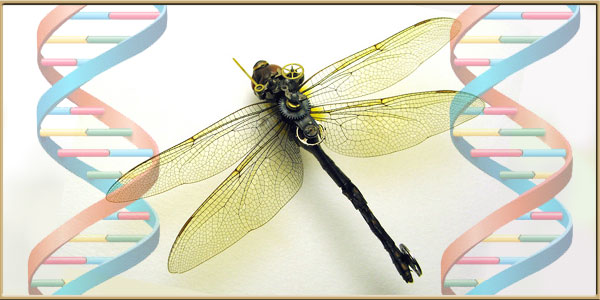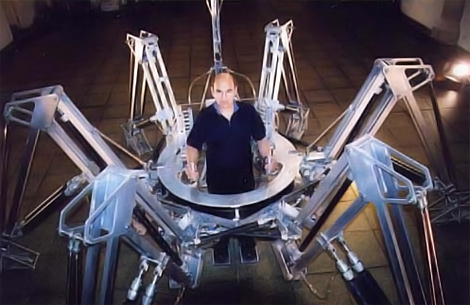The Menagerie Part 5: The Insectoid
Bugs. Freak. Me. Out.
I hate bugs. I don’t know what God could have been thinking creating something so ugly. I’ve been stung by bees and wasps, bitten by bugs, and bitten by a couple of spiders, the last putting me in the emergency room twice. So far, no super powers from any of them. They’re worthless as far as I’m concerned. If Spider-Man had eight eyes, eight legs, and fangs, he wouldn’t be as popular as he is.
But as was stated in the Introduction, we’re making a team of animal-like superheroes. The Canine and the Feline are fairly tame. The Reptilian would freak a number of people out. But the Insectiod is a bit disturbing to a greater number of people, especially criminals, that superstitious and cowardly lot.
But unlike the others, most of the abilities of the insect hero would be more technological than biological. Our goal is to match effects, though not necessarily the methods.
Exoskeleton
In order to have a proper insect hero, he’s got to have an exoskeleton. I think it’s almost obligatory. And due to cybernetic technology, we can build a lot of the other powers and abilities into it. As an added bonus, the hero won’t look like an insect outside of the suit and can actually have a secret identity.
The exoskeleton should be a form of plate armor. Now we could try to use something like titanium or cubic boron nitride. But I would like to take a different approach. I would use a carbon “building block” like C4, C5, or C8, and use them with other elements to create plates which are each made up of a single molecule. Whenever something is cracked, there are fissures between the molecules. But by having single-molecule plates, there’s nothing to separate. The insect hero would be nearly invincible against physical attacks! Could you imagine Captain America’s shield made this way? Sure, it wouldn’t have all the properties of the fictional Vibranium. But even Mjolnir wouldn’t be able to dent it! (Take that, Thor!)
Now just add an Impact Gel under layer to absorb impact shock, and our hero is ready for a firefight!
Wall Walking
This could be done with the Gecko method as I described with the Reptilian. No sense in going any further in depth.
Super Strength

Many insects are known for their unbelievable levels of strength. We certainly can’t pass this up with our hero. There are a couple of ways we can give our hero superhuman strength. We can give the power to the hero and we can put it into the suit. To have the ability in the hero himself, we would need to alter the muscle to match that of an insect. If we put the power into the suit, the best method would be carbon nanotube muscles which contract under an electrical current. If they pulse rapidly like the muscles of Dennis Rogers, the strength becomes much greater. So should we give super strength to the hero or to the suit? Um … Yes. Both!
We will probably have to reinforce the exoskeleton though. Lifting heavy weights and dropping from great height (from powerful jumps) is murder on the bones. The human skeleton isn’t made to take that kind of punishment. So we could reinforce the bones and cartilage or the suit. The suit is a lot easier. While the bones can be reinforced quite easily, the cartilage and the ligaments which hold it all together are a bit complicated to strengthen. So with super strength and a super strong, reinforced suit, the insect hero is ready to flex some muscle!
Sense of Smell
Many moths have antennae. And I don’t just mean simple antennae. I mean gargantuan, disproportional, eat-your-heart-out-Bullwinkle sized antennae! This allows the moth to “smell” things from miles away, often times better than a bloodhound. This is no minor feat. And the best part? They don’t have to be any bigger than that! They don’t have to be proportional to the head like they are with a moth. They just need to have the same surface area! There’s no need for anything larger. After all, at a certain point, a hero in Sheboygan wouldn’t be able to tell if a scent originated in London or Shanghai. So we can attach them to the hero’s head and try to figure out a way to expose them outside of the exoskeleton, or we can build the antennae into the exoskeleton armor and feed the information to the hero either by way of a heads-up display or an implant directly into the brain. Yeah, let’s build them into the suit.
Vision

Many insects can see in near darkness. The reason for this is their compound eyes. It’s like building a single image not with one eye, but with many eyes, each one gathering that small amount of light. When it all adds up, it creates a usable image. Compound eyes are much better than a tapetum which hinders other aspects of vision (that and we’re not trying to reproduce Riddick here). Compound eyes in the suit would allow not one, but many cameras for each eye. When we have that, we can use them to give feedback beyond normal human or insect capabilities. We can look into the UV and infrared ranges, and even provide night vision (with the old see-through-clothing technology that home cameras used to have, although it might serve to distract our hero).
Flight
Some bugs fly. I’m not sure if you’re aware of that. I just thought I would throw that out there. So how can we make our insect hero fly?
One possibility is to build an negative energy generating apparatus (NEGA) into the suit. This would allow the hero to fly like Superman or Peter Pan. While that’s all fine and good, I think we can do better.
Perhaps wings? They might be a bit cumbersome. That is unless they’re solid light constructs! Okay, so it’s still theoretical. But it’s still a possibility. Electrons tend to repel each other. Photons don’t typically effect each other. However, some researchers believe that photons can be made to repel each other just like electrons. This would allow them to be controlled and even produce crystalline structures. I would make wings. They would be virtually weightless, and can be size-adjusted based on the weight load they need to carry. Solid light constructs can also be used to produce other things as well, like stingers. Speaking of which …
Stingers
Imagine our hero being able to fire projectiles at criminals! I would want to use solid light constructs for this one. But if it won’t work for that (or we can’t get solid light to work at all), then gas-powered darts should suffice.
And finally …
Flame Thrower
Finally, we should give the hero a flame thrower. I know it’s not very insect-like. But flame throwers are awesome, and this dude is on a roll!
So there we have it. We now have a hero which can thoroughly … um … “bug” criminals everywhere! Our insect hero is now charged with fighting for truth, justice, and freedom from over sized fly swatters!





